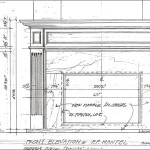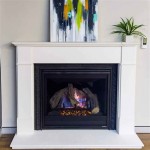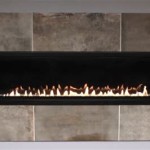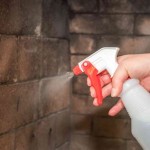Birch Fireplace Logs: A Comprehensive Guide
Birch fireplace logs are a popular fuel choice for wood-burning stoves, fireplaces, and outdoor fire pits. Their aesthetic appeal, ease of ignition, and relatively clean burning properties contribute to their desirability. However, understanding the characteristics, advantages, and disadvantages of birch as firewood is essential for making informed decisions regarding selection, storage, and safe usage. This article provides a detailed overview of birch fireplace logs, covering various aspects including types of birch, burning characteristics, proper seasoning, storage guidelines, and comparative analysis with other firewood options.
The term "birch" encompasses a diverse genus of deciduous trees within the Betulaceae family. Several birch species are commonly utilized for firewood globally, each exhibiting slight variations in density, burning characteristics, and availability. Understanding these differences can help consumers select the most appropriate birch variety for their specific heating needs.
Paper birch (Betula papyrifera), also known as white birch or canoe birch, is readily identifiable by its distinctive white bark that peels off in papery layers. It is a relatively fast-growing species and is widely distributed across North America. Yellow birch (Betula alleghaniensis) has yellowish-bronze bark and is typically denser than paper birch, resulting in a longer burn time. Sweet birch (Betula lenta), also recognized as cherry birch, possesses dark brown bark with a distinctive wintergreen aroma when twigs or bark are broken. Gray birch (Betula populifolia), identifiable by its chalky gray bark and triangular leaves, is a faster-growing but less dense species compared to other birches. European white birch (Betula pendula), commonly cultivated in Europe and North America, exhibits white bark and graceful drooping branches.
The suitability of each birch species for firewood depends on several factors, including density, moisture content, and resin content. Denser species generally provide a longer burn time and greater heat output, while lower moisture content is crucial for efficient combustion and reduced smoke production. Resin content can influence the aroma and potential for creosote buildup, which requires consideration for chimney maintenance.
Key Point 1: Burning Characteristics of Birch
Birch firewood is renowned for its ease of ignition and relatively quick burn time. The bark's papery layers act as an excellent natural kindling, facilitating rapid flame establishment. However, this characteristic also contributes to a shorter burn duration compared to denser hardwoods such as oak or maple. Understanding the burning characteristics of birch is crucial for efficient fuel management and achieving desired heating outcomes.
The heat output of birch firewood is typically lower than that of denser hardwoods. As a result, a larger volume of birch logs may be required to generate the same amount of heat. Nevertheless, birch provides a consistent and reliable heat source, making it suitable for supplementing heating systems or providing warmth for shorter periods. Its quick-burning nature makes it especially well-suited for starting fires rapidly or for use in fire pits where a longer burn time may not be necessary.
One of the primary advantages of birch firewood is its relatively clean burning properties. When properly seasoned, birch produces less smoke and creosote compared to many softwoods and unseasoned hardwoods. This contributes to reduced chimney maintenance and a lower risk of chimney fires. The lower smoke production also makes birch a more environmentally friendly option compared to some other firewood choices.
The aroma of burning birch is often described as pleasant and slightly sweet, adding to the overall ambiance of a fire. Certain birch species, such as sweet birch, release a characteristic wintergreen scent when burned, further enhancing the sensory experience. The visual appeal of birch logs, particularly those with their distinctive white bark, also contributes to their popularity as fireplace fuel.
Despite its advantages, birch can present some challenges. Its relatively quick burn time may necessitate more frequent refueling compared to denser hardwoods. Moreover, birch is susceptible to decay if not properly stored and seasoned. Its bark can also attract insects, particularly if not stored in a well-ventilated area. Proper handling and storage are therefore essential for maximizing the benefits of birch firewood.
Key Point 2: Seasoning and Storage of Birch Fireplace Logs
Proper seasoning and storage are critical for ensuring the optimal performance and longevity of birch firewood. Seasoning refers to the process of drying freshly cut wood to reduce its moisture content to an acceptable level for burning. Unseasoned wood contains a high percentage of water, which hinders combustion, reduces heat output, and increases smoke production. Seasoning birch firewood typically involves splitting the logs, stacking them loosely to allow for air circulation, and storing them in a dry, well-ventilated area.
The ideal moisture content for firewood is typically below 20%. Using a moisture meter can help determine when birch logs are adequately seasoned. Properly seasoned birch will feel lighter than unseasoned wood and will exhibit cracks or splits at the ends. The bark may also begin to separate from the wood. Seasoning time varies depending on the climate, wood species, and storage conditions. Generally, birch firewood requires at least six to twelve months of seasoning to reach optimal moisture content.
Storage conditions significantly impact the seasoning process. Stacking birch logs off the ground on pallets or planks allows for better air circulation, preventing moisture from accumulating at the base. Covering the top of the woodpile with a tarp or roof can protect it from rain and snow while still allowing for ventilation. However, it is important to avoid completely enclosing the woodpile, as this can trap moisture and promote decay.
Proper storage also minimizes the risk of insect infestation and fungal growth. Stacking birch logs in a sunny location can help to dry them more quickly and discourage insect activity. Removing any loose bark or debris from the storage area can further reduce the likelihood of pests. Regularly inspecting the woodpile for signs of decay or infestation is crucial for maintaining the quality of the firewood.
Storing birch firewood too close to a house or other structures can pose a fire hazard. It is recommended to maintain a distance of at least 10 feet between the woodpile and any building. Proper storage practices not only enhance the burning performance of birch firewood but also contribute to safety and prevent potential property damage.
Key Point 3: Comparison with Other Firewood Options
Birch firewood is commonly compared to other hardwood and softwood species in terms of heat output, burn time, smoke production, and overall cost. Understanding these comparisons can help consumers make the most appropriate firewood choices based on their specific needs and preferences.
Compared to denser hardwoods such as oak, maple, and hickory, birch typically provides a lower heat output and a shorter burn time. However, birch is often easier to ignite and provides a more consistent flame. Denser hardwoods are generally preferred for extended heating periods and larger fireplaces, while birch is more suitable for shorter fires and smaller heating appliances.
Softwoods, such as pine and fir, generally burn more quickly and produce more smoke than birch. While softwoods may be less expensive, they require more frequent refueling and contribute to increased creosote buildup in chimneys. Birch is therefore a cleaner-burning and more environmentally friendly option compared to many softwoods.
The cost of birch firewood can vary depending on location, availability, and the supplier. In some regions, birch may be more readily available and less expensive than other hardwood species. However, in areas where birch is less common, it may command a higher price. Comparing prices from multiple suppliers is essential for obtaining the best value for birch firewood.
Factors such as ease of splitting, aroma, and visual appeal also influence consumer preferences. Birch is relatively easy to split and provides a pleasant aroma when burned. Its distinctive white bark adds to its aesthetic appeal, making it a popular choice for both indoor and outdoor fireplaces. Ultimately, the best firewood choice depends on individual priorities and the specific requirements of the heating appliance.
Alternative fuel options, such as manufactured fire logs and wood pellets, also offer distinct advantages and disadvantages. Manufactured fire logs are typically easier to store and handle than traditional firewood, and they provide a consistent and predictable burn. However, they may not offer the same aesthetic appeal or aroma as natural wood. Wood pellets offer a high heat output and are relatively clean-burning, but they require specialized pellet stoves or inserts.
The decision to use birch firewood depends on a variety of factors, including individual preferences, heating needs, and budget constraints. Weighing the advantages and disadvantages of birch against other firewood options and alternative fuel sources is crucial for making an informed and satisfying choice.

White Birch Log Set For Fireplace Com

Wilson Large Birch Fireplace Logs Decorative Natural Bark Home Décor Denmark

White Mountain Hearth Lsxxb2v Kit Birch Vented Ceramic Fiber Complete Fireplace Log Set

Birch Log Bundles Just For Show Door Sixteen

Bundle Of Birch Logs Small Terrain

Create A Stacked Birch Log Fireplace Insert Decor To Adore
-Vented_FX_Burner_vvsj-15_roys-wz_945b-4d_slhv-h2_kgep-8t.jpg?strip=all)
48 Birch Gas Log Set For Masonry Fireplace

Peterson Real Fyre Charred Mountain Birch Gas Log Set With Vented Ansi Certified G46 Burner Nyc Fireplaces Outdoor Kitchens

Wilson Set Of 3 Large Birch Fireplace Logs 5 Diameter X 17 18 Long De

Create A Stacked Birch Log Fireplace Insert Decor To Adore
Related Posts








